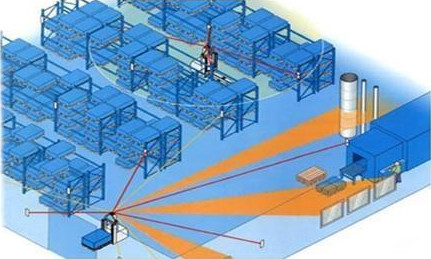Guidance of AGV means that the actual control command value of AGV is calculated according to the target value provided by the path of AGV according to the position information obtained by the navigation of AGV, that is, the set speed and steering angle of AGV This is the key to AGV control technology. In simple terms, AGV guidance control is AGV trajectory tracking. This will not cause too many problems for wired guidance (electromagnetic, magnetic tape and other guidance methods), but it is not an easy task for wireless guidance (laser, inertial and other guidance methods).

AGV Guidance
The path planning of the AGV is to design the path trajectory of the AGV operation according to the actual environment of the AGV operation. The AGV stand-alone will automatically drive according to the path (segment) attribute in the segment table issued by the ground control system. The AGV's guidance control algorithm is to solve how the AGV's reference point walks along the predetermined trajectory after the segment table is issued. Generally, it is necessary to realize the guidance control of the straight line segment and the fourth power curve. For AGVs with different driving methods, due to their different kinematic models, the corresponding guidance control algorithms are also different. Here is a brief discussion of the SD (Steer Driving) AGV guidance algorithm:
Our control target is the reference point of the AGV, the purpose is to make the AGV walk well along the established trajectory. For the SD type AGV, only the AGV front wheel rotation angle and speed can be controlled. From the motion model, it can be known that the running trajectory of the reference point is only related to the steering angle of the front wheel. In fact, it is the control of the steering angle of the front wheels.
In the specific design process, a "tracking guidance method" is used, that is, the reference point always tracks the virtual point on the path trajectory during the operation of the AGV. This virtual point is like a rabbit used in dog racing. The AGV can never catch up, but never far away in front of the AGV; the direction of the AGV's progress always points to the virtual point. Through such periodic adjustment, the AGV can be walked along the path trajectory with little error.




